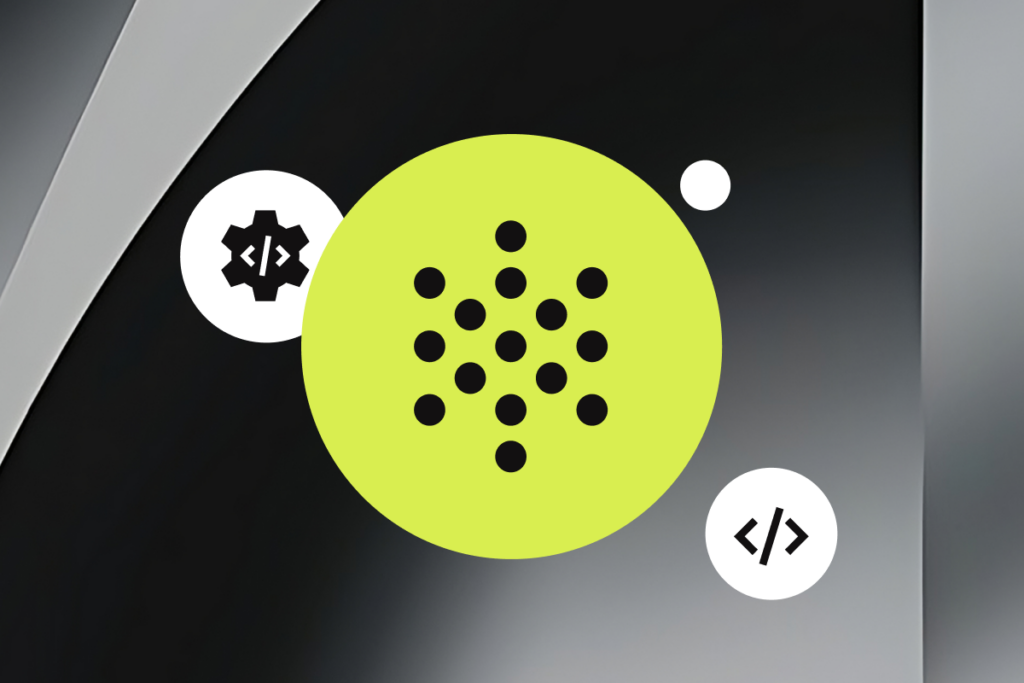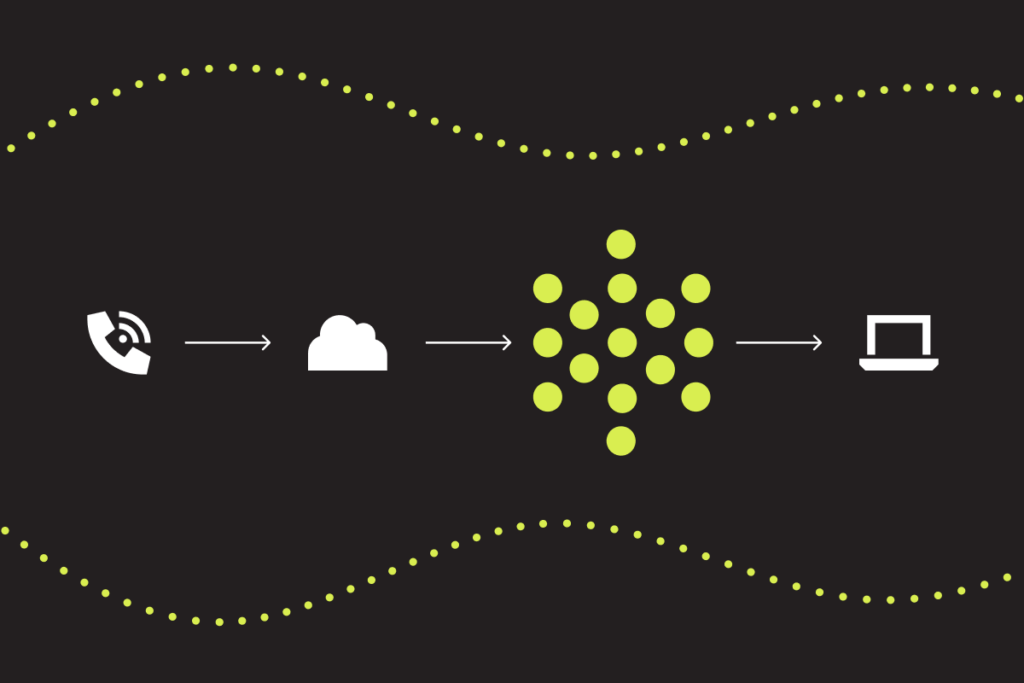Table of Contents
Companies have invested significant time and money in automating customer conversations to empower customers and improve operational efficiency.
Despite these investments, increasing call volume, high agent attrition rates, and growing onboarding costs present an ongoing challenge that many contact centers need help managing.
As companies continue to search for ways to retain staff, streamline processes, and improve the customer experience, many are turning to conversational assistants.
This post will look at conversational assistants and five ways you can use them to drive value in the contact center.
What is a conversational assistant?
A conversational assistant is designed to interact with users through natural language. Rather than prompting users with rigid statements like “Tell me in a few words why you’re calling,” it encourages open-ended responses by asking questions like, “How can I help.” This approach lets customers explain their needs in their own words, whether with short, simple phrases or long, detailed explanations.
The key to a good conversational assistant is its ability to understand and respond effectively to whatever the customer says, building trust over time. As the assistant proves that it can understand even complex queries and offer helpful solutions, customers become more confident in its capabilities, engage more deeply, and are less likely to ask for a human agent.
How does a conversational assistant work?
To deliver effective user experiences where customers can speak naturally with a conversational assistant, it must successfully listen, understand, and respond to what a user is saying. This requires a specific tech stack to handle the nuances of natural conversation, where callers can go off-topic, call from loud environments, or speak in non-technical language.
Automatic speech recognition (ASR)
Firstly, automatic speech recognition (ASR) models are needed to translate what users say into written transcriptions that can be digested by large language models. By creating custom ASR models fine-tuned on in-house call data, accuracy can be improved. This leads to more fluid and natural customer interactions, reducing the chances of frustrating experiences over the phone and improving customer experience.
Spoken language understanding (SLU)
Even the best ASR will result in gaps and errors in transcriptions. SLU models recover the important information from incorrect speech transcriptions, using context and customer information to infer the correct input.
Once the speaker’s words have been transcribed, the conversational assistant needs to understand the context behind what the caller is saying and how to respond in a way that continues to move the conversation toward an appropriate resolution.
Large language models (LLMs)
These machine learning models can extract meaning from words and sentences and define the next steps the system should take in the context of the conversations.
These models are trained using millions or even billions of text samples from various sources, such as social media, product descriptions, scripts, news articles, and FAQs. This extensive training, combined with fine-tuning, helps LLMs grasp the meaning of what a customer means, even if they haven’t encountered the exact words before.
Dialogue management
This is a control layer that sits on top of LLMs to enable organizations that deploy a conversational assistant to have full control over transactional processes. It’s crucial because it ensures that conversational assistants not only generate responses but also guide conversations in a structured and goal-oriented manner, especially for business-critical or transactional tasks. This reduces the likelihood of errors and ensures consistency, leading to better user experience and trust. The more things the conversational assistant gets right, the more customers trust its ability to solve their problems, and the more they engage, instead of requesting to speak to an agent.
Safety guardrails
Generative AI guardrails are technical features that protect against prompt injections and other malicious user behavior. Each layer of safety is designed to ensure a conversational assistant avoids hallucinations and harmful content and only answers questions related specifically to what the user is asking.
Speech synthesis
Once a conversational assistant has listened and understood the caller’s intent and the appropriate response, it then muse turn that response into speech.
Text-to-speech (TTS) models transform text transcriptions into spoken utterances. Traditional TTS has delivered robotic-sounding voices, but a new generation of TTS can
leverage voice cloning and intonation training to deliver a more natural experience.
5 ways conversational assistants add value (to the contact center)
Breakthroughs in AI technology enable companies to develop a new generation of voice assistants that promise great CX at scale. Rather than requiring users to speak in keywords and follow rigid flows, conversational voice assistants enable customers to speak however they like for as long as it takes to solve their problem. This delivers an experience similar to speaking with a customer service representative and keeps the caller engaged for long enough to offer true resolution without the need to speak to a person. Here’s how they add value to the contact center.
1. Reduced call volume
Conversational assistants can fully resolve up to 50% of customer calls without the customer needing to speak with a person. We call this Zero Touch Resolution.
Reducing call volume means giving time and resources back to the call center. These resources can be used to lower cost to serve, alleviate labor shortages, or boost customer experience.
Customer-led conversational assistants give callers the freedom to speak however they like and understand intent from even long and complicated stories.
The more things the conversational assistant gets right, the more customers trust its ability to solve their problems, and the more they engage, instead of requesting to speak to an agent. Better customer experiences mean higher resolution rates and lower call volume.
2. Better CX
Despite widespread AI myths, customer-led conversational assistants can improve customer experience across your entire contact center program.
When agents are required to handle fewer calls, wait times go down for all customers, and agents can spend more time with the people who need them most.
With conversational assistants, customers can access support 24/7, 365 days a year, in any language.
Conversational assistants can even help you bridge the gap between digital self-service and the phone channel by connecting callers with available digital resources via text message, email or push notification.
3. Improved agent retention
The repetitive nature of an agent’s role combined with a lack of career development opportunities, excessive pressure and abusive calls are just some of the reasons employee turnover rate in contact centers remains 30-45% above the average of other occupations.
By containing repetitive call types, conversational assistants free up agents to focus on more fulfilling work and create a less stressful working environment. They alleviate the pressure of strict call handling times, improving working conditions and freeing agents to take comfort breaks.
As fewer customers are left waiting on hold, frustration is reduced, making calls more pleasant for both agents and customers.
In times of labor shortages and a competitive hiring market, contact center agent attrition is not just a cost problem. It may prove difficult to fill agent seats, making it more important than ever to retain staff.
4. Mitigate seasonality & irregular volume
Many industries expect and plan for peaks in call volume, such as Q4 in retail and open enrollment season in insurance. In these cases, conversational assistants can “smooth out” the peaks and reduce the amount of seasonal staff you need to hire.
But some peaks in call volume are unexpected. Storms may cause deliveries to be delayed or flights to be grounded. Issues on your website and changes in Covid restrictions may cause more people to call. In these cases, a conversational assistant will allow you to serve more customers, more quickly, in crisis situations.
Peaks in call volume are when customer service crises happen. Unhappy customers will take to social media to share their bad experiences, and serious brand damage can occur when contact centers are unable to serve customers. A conversational assistant mitigates the risk of unhappy customers in busy times.
5. Better operational decisions from structured conversational data
Almost every call center has access to unstructured data, such as call recordings and transcripts. Call recordings contain all of the data on what a customer wants, but the data is not structured into a usable format.
Structured data has been categorized so that it can be analyzed. This might look like transcriptions of call recordings broken down by intents (what a caller wants), values (such as the number of people on a reservation, date, or time), or specific conversational turns (customer’s responses to specific questions). This allows clients to draw conclusions from customer data, such as – 3/10 calls are about order tracking or 20% of tables booked on Thursdays are for two people.
Contact centers often rely on agents to create structured data. Agents must select a ‘reason for call’ from a drop-down list. Not only does this reduce the amount of time agents can spend on the phone, but manual entry is prone to human error.
Companies that use conversational assistants get access to structured data, including insights into when and why customers are calling, when there are peaks in specific queries, and where there is demand for specific products and services.
By automatically structuring data during calls, conversational assistants allow contact centers to improve the accuracy of call routing, more effectively staff particular teams, increase awareness of outages and issues, and make changes to improve the customer experience and reduce operating costs.
Create better agent and customer experience with PolyAI’s conversational assistants
By reducing repetitive work and creating time for customer service agents to have more meaningful interactions, conversational assistants can reduce agent attrition, increase efficiencies, and leave a positive lasting impression of your customer experience that drives brand loyalty.
PolyAI offers the world’s most lifelike voice AI for enterprise customer service and delivers high-quality, human-like conversations optimized for customer engagement at scale.
Achieve impactful automation requires conversational assistants with which customers can quickly and naturally engage. Our voice assistants achieve this by:
- Understanding what callers are saying, regardless of accent or background noise
- Understanding what callers mean, regardless of the words they use to say it
- Understanding long utterances and storytelling
- Extracting multiple values as they’re given
- Handling non-linear conversations
- Speaking in a natural tone of voice
Handle routine tasks
The time agents spend on routing calls such as order tracking or FAQs varies. PolyAI clients have reported that as much as 60% of agent time is spent answering questions that could be resolved online or through cheaper channels.
By deploying a PolyAI conversational assistant you can reduce repetitive work and create time for your agents to have more meaningful interactions. Our conversational assistants can reduce agent attrition and leave a positive lasting impression of your customer experience that drives brand loyalty.
Fast, accurate resolutions
Automating the low-value part of a call, like customer password resets, ID&V, or simple FAQs can drive down AHTs by 20-30%, giving additional capacity to your call center without sacrificing customer service. PolyAI ensures that calls are resolved quickly and correctly, improving customer satisfaction by eliminating long wait times.
Conversational assistant FAQs
Conversational AI and generative AI are related but not exactly the same. Conversational AI focuses on interacting with users through dialogue, like chatbots and virtual assistants. Generative AI, on the other hand, refers to models that create new content, such as text, images, or music, based on patterns learned from data. Conversational AI can use generative AI to produce responses, but generative AI can be used for a broader range of tasks beyond just conversation.
Conversational assistants improve customer service by providing quick, accurate responses to customer inquiries. They can handle multiple queries simultaneously, offering 24/7 support. They also reduce wait times, automate routine tasks, and help customers find information or resolve issues efficiently. This leads to a smoother experience for customers and frees up human agents to focus on more complex problems.
You can evaluate the effectiveness of a conversational assistant with efficiency metrics such as call reduction rate, average speed of answer, call abandonment rate, and call transfer rate. You can also assess based on customer experience metrics such as CSAT, NPS, and customer effort scores.
Concentrating on metrics in isolation might cause you to miss important aspects of customer experience. Taking a holistic approach by considering multiple metrics creates a comprehensive understanding of how a conversational assistant influences the entire contact center.




